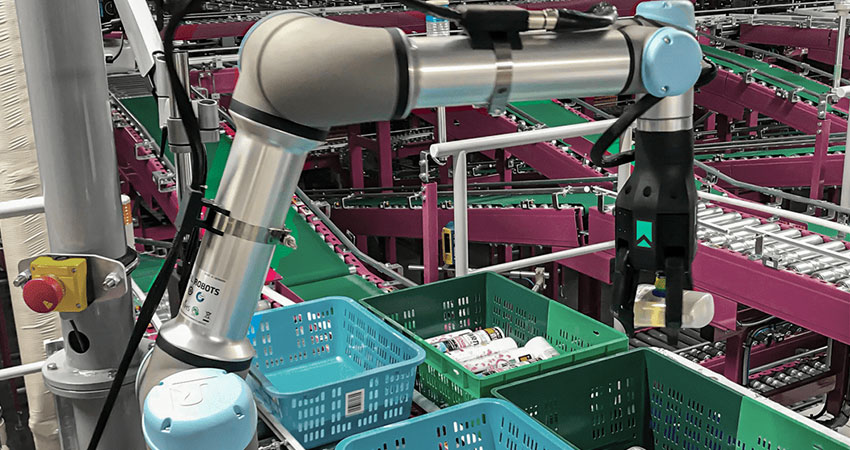Leif Jentoft, co-founder and chief strategy officer at RightHand Robotics, said he was visiting a potential customer’s fulfillment center in California last fall, and found it was operating at 70% of capacity because they couldn’t find sufficient workers, with a fully loaded labor cost of $50 an hour.
“Piece picking volume is growing tremendously along with ecommerce, and it’s harder to deliver that, relative to available labor,” Jentoft said. “That’s the reason we exist, trying to help retailers improve the resilience of their supply chain.”
RightHand Robotics, which was founded by Jentoft and CEO Yaro Tenzer in 2015, has just secured a $66 million Series C round to fund growth of its partner network, hire more engineers and expand its global presence. The company grew out of a combined team from Harvard, Yale and MIT that won a DARPA challenge to bring grasping intelligence powered by computer vision and applied machine learning to bear on real-world problems.
The latest round was led by Safar Partners, Thomas H. Lee Partners L.P. and SoftBank Vision Fund 2. Other investors included Zebra Technologies, Epson and Global Brain, along with previous participants GV, F-Prime Capital, Menlo Ventures, Matrix Partners and Tony Fadell’s Future Shape.
Jentoft said RightHand Robotics uses an OEM go-to-market approach, with system integrators serving retail and ecommerce companies among its biggest clients. “We do have an end customer presence, but we power integrators to create a better solution,” he said. “It’s productized, fast to deploy, with short time to value. As the industry evolves, the OEM building blocks get better, with decades of experience and relationships, giving (SI companies) better tools to weaponize that with customers.”
Among the companies using its robotic picking solution are Japanese wholesaler Paltac and European pharmacy apo.com Group, both of which are using the latest generation of its RightPick 3 grasping arm for fulfillment operations. Jentoft said apo.com is able to achieve the same order volume with 20 associates that a competitor does with 250-300 workers.
Much of the hiring focus is on software engineers to power AI and machine learning that fuels RightHand’s technology and the arm’s functionality.
“We’re growing that team aggressively,” Jentoft said. “It’s an exciting time, with everyone in academia and industry wanting to see their algorithms make an enormous impact. There’s a large dataset of what the robot saw and did, what happened. It’s an interesting playground for advanced machine learning and computer vision, not just solving an academic exercise but real-world customer problems.”
In 2019, RightHand Robotics partnered with autonomous mobile robot maker Locus Robotics to work on joint solutions that combine batch picking and conveyance with automated sortation.

